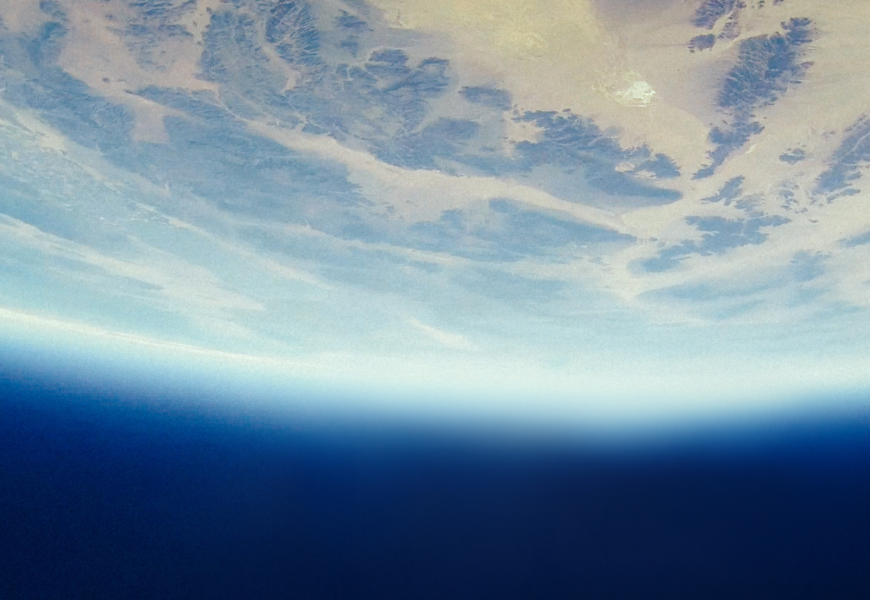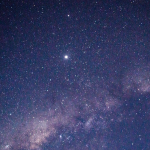Researchers develop a new model to establish the presence of liquid water on starless exoplanet moons. This is the first time the chemical evolution of this type of object has been pursued.
By Marllory Fuentes / mfuentes@astro-udec.cl / Photographs: Astro UdeC
Currently, it is known that a planet that floats freely, is an object that orbits around a massive non-stellar object (for example, a brown dwarf) or the Galactic Center. However, the presence of exomoons orbiting planets that float freely has been theoretically predicted and has been recently inferred from observations.
A team of researchers from Universidad de Concepción, led by Professor Stefano Bovino, in collaboration with the University Observatory Munich, the Observatoire de la Côte d’Azur; the European Southern Observatory, and Sophia University; ELSI, developed a simulation of what would happen in an atmosphere of a moon the size of Earth that orbits around an extrasolar planet the size of Jupiter, without access to sunlight. Patricio Ávila, Ph.D. student of the Department of Astronomy of Universidad de Concepción, and lead author of the research explains that “we have made a model of what happens in the atmosphere of a moon that belongs to a planet without access to sunlight, which we call a Free-floating planet (FFP), a starless planet. This hypothetical object, the size of the Earth, spins around a larger one, the size of Jupiter. We explore what happens with the chemistry in this atmosphere, whether it is possible that liquid
water forms on the surface of this type of object”.
On there not being a star that provides warmth to these objects, they reach very low temperatures. In the research made by the scientists, a star was replaced by other sources as the main source of energy, such as tidal warmth (generated by the dissipation of orbital and rotational energy inside the planet/moon), or warming by radioactive isotopes (radiogenic warming). The interaction of the atmosphere with cosmic rays, highly energized particles, which
chemically intervene with compounds in this type of environment, was also included.
As astronomer Patricio Ávila explains, the importance of this research is based on there only being candidates for possible FFP at the moment, and this is the first time that the chemical evolution of this type of object has been pursued.
As a result of the model developed, it was determined that these moons can retain an atmosphere capable of guaranteeing the long-term thermal stability of liquid water on their surface. It was found that, under specific conditions, and supposing there are stable orbital
parameters over time, liquid water could form on the surface of the exomoon. The final amount of water for a landmass exomoon is considerably less than the amount of water in the Earth’s oceans (similar to the amount found, for example, on the subsurface of Enceladus, one of Saturn’s moons), but enough to house the potential development of primordial life. The chemical balance timescale is controlled by cosmic rays, the main driver of ionization in the developed
exomoon atmosphere model.
The research is titled “Presence of water on exomoons orbiting free-floating planets: a case study”, and was published in the prestigious “International Journal of Astrobiology. It was carried
out over two years, starting as the undergraduate thesis of Patricio Ávila, with the academic guidance of Professor Stefano Bovino Ph.D.
The PATMO one dimension atmospheric modeling code, a new code developed by Tommaso Grassi of LMU was used for this work. “This is a code that allows exploring the chemistry of different types of atmospheres”, Ávila explains, who within his role implemented physical
effects on the model, like the aforementioned tidal and radiogenic warming. “Work was also done on debugging the code, and a chemical network was developed for low temperatures -which is what allowed us to evaluate the chemistry-. Then, with this setup, different cases were explored,
finding the most favorable ones to be analyzed”, the student points out.
The next step in the study consists of including the evolution of parameters that had previously been considered constant, for simplicity, to understand how they are linked to the chemical evolution of these types of atmospheres. This includes the evolution of the orbital parameters
-eccentricity, the distance between objects, among others-, that actively intervene in the amount of tidal warming, an essential ingredient of this model.
For more information: stefanobovino@astro-udec.cl
Last modified: 29 de agosto de 2025






